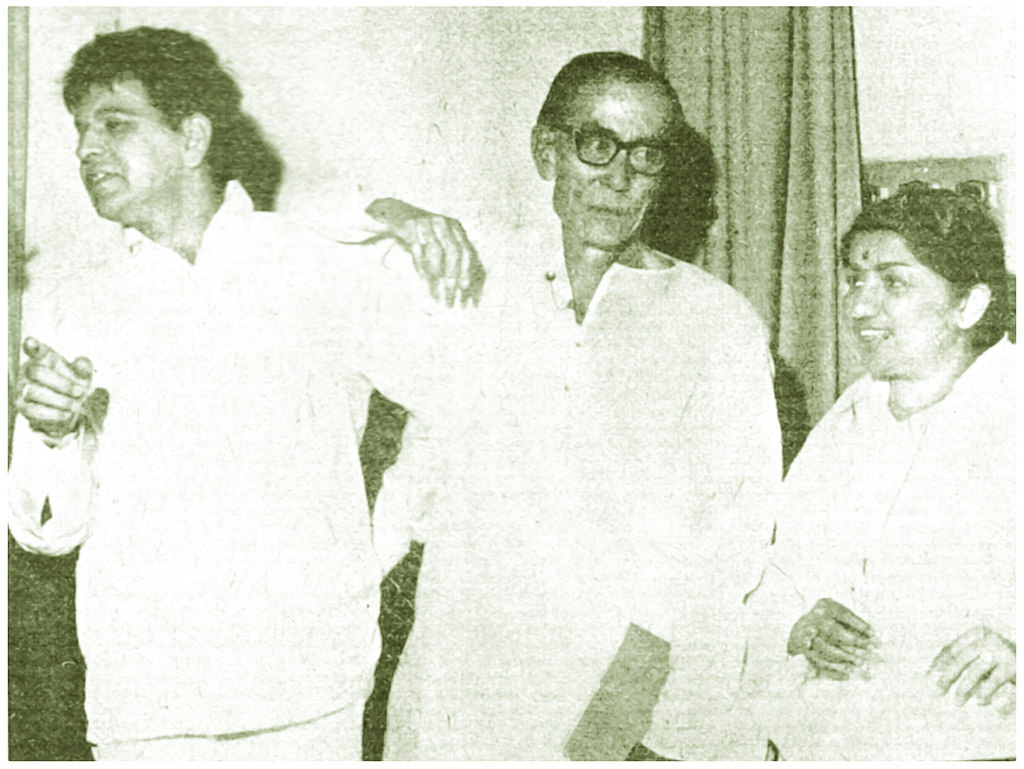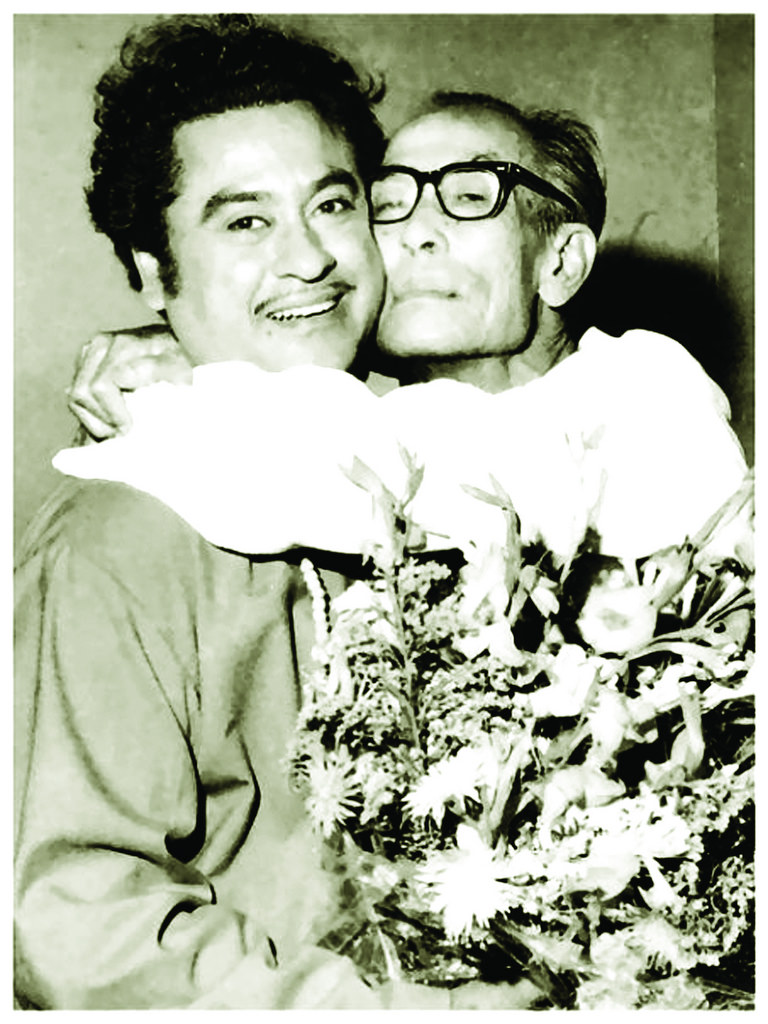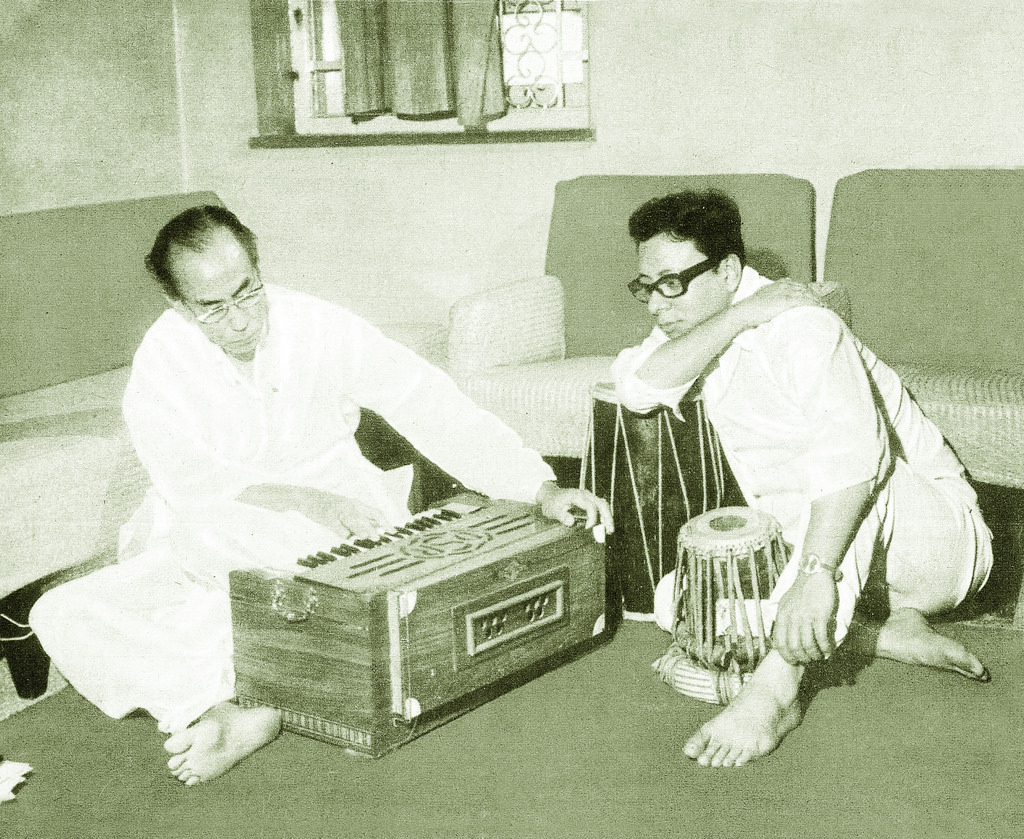Employing three distinctive narrative voices, Sun Mere Bandhu Re is an account of maestro S. D. Burman’s life and the interplay between a very personal first-person narrative and a studied third-person voice juxtaposed with archival excerpts along the way make this a truly unique reading experience.
A born prince who chose to live a commoner’s life, a teacher who never stopped learning, a peerless singer and most importantly a composer par excellence, there are many facets to S. D. Burman. Yet, there is hardly anything that true music lovers don’t know about dada Burman. In fact, the composer even penned a slim autobiography, Sargamer Nikhad, early on in his life but Sun Mere Bandhu Re doesn’t let anything confine it.
First-person voice
The first-person voice, which was inspired by Dada Burman’s autobiography amongst other documents, proffers a very personal texture while at the same time effortlessly transporting as well as transfixing you. It’s one thing to read an account of some part of S. D. Burman’s life, such as him finding it difficult to get used to Bombay after shifting base from Calcutta but to read it, to almost hear it in his own words elevates Sun Mere Bandhu Re to a higher plane.
“I must get used to the sea. And make it sing to me the songs the Ganga san, as her waves lapped the shore in the breeze. Maybe if I had realized this city had no Ganga, and that I would miss it so much, I would never have come. But here I am, and it is done. And I must learn not to live in the past.”
The journey that led to the rediscovery of sorts of R. D. Burman following his untimely demise in 1994 often ends at a point where no further veneration of the musician is possible. This rediscovery and virtual reinterpretation of R. D.’s music and his craft has cast a shadow on most of Dada Burman’s compositions in which his son was an assistant. In fact, many believe that Aradhana’s Roop Tera Mastana couldn’t possibly be Dada Burman’s creation.
The book examines this phenomenon from a very unique perspective, with Sathya Saran’s first-person account of Burman Senior’s emotions towards his only son revealing how he might have unwillingly shackled R. D.’s flight. Rather than avoiding situations where the absence of credible sources such as the main players themselves could cast a shadow on the material, the book applies a humane point of view.
Professional disagreements
Similarly, the section which shows Dada Burman stopping his significant other, Meera, from blossoming into her own as a singer, also makes for very interesting reading. Stories of S.D. Burman’s professional disagreements with the likes of Lata Mangeshkar or Sahir Ludhianvi are well known. Yet, the gentleness with which popular consciousness recalls S.D. Burman often convinces us that he was not as emotionally volatile as others. Looking at these run-ins from his point of view, Sun Mere Bandhu Re excels at creating a complete picture of a man who could be as soft as silk but as obdurate as his opponent.
The other interesting aspect of the book is the manner in which it was compiled. According to Sathya Saran, a major portion of the material was literally handed over to her by a gentleman whose father had been collecting clippings published about SD Burman for decades. The treasure trove that Moti Lalwani offered the writer gave her a perspective that was entirely unique. Many of the interviews which Lalwani conducted with people who had played a significant role in S.D.’s musical world ‒ such as Ustad Rais Khan, Anandji Bhai of the Kalyani-Anandji duo, and Homi Mullan ‒ are also included in the book.
Studded with anecdotes
Similarly, the numerous anecdotes ‒ Dada Burman asking Bimal Roy what kind of bee Madhumati was or him enquiring of an assistant’s missing note while playing, ‘Tumhara Ma kahan hain’ (where’s your mother?) and being told, ‘Gaon mein’ (in the village) ‒ as well the personal accounts become more endearing thanks to the commingling of the three voices. One of the most poignant sections of the book explores the time when Burman Sr. suffered a heart attack and how the fickle film industry moved on by simply replacing him with other composers.
The section has a wonderful rendition of how Dev Anand refused to think of replacing or even allowing R.D. Burman, who was then assisting his father, to complete the songs for Guide. In the preface the author makes it clear that the first-person voice was the spine that she unknowingly sought to tell the story of S.D. Burman, and as a perfect tribute to her subject allowed her writing to roam free much like a classic dada Burman tune.
The unusual narrative style of Sun Mere Bandhu Re might take a while to grow on you, but once it does, it’s nothing less than a treat.

S. D. flanked by Dilip Kumar and Lata Mangeshkar

S. D. with his favourite singer, Kishore Kumar

S. D. with son R. D.
Sun Mere Bandhu Re ‒ The Musical World of S.D. Burman by Sathya Saran, Harper-Collins India.










